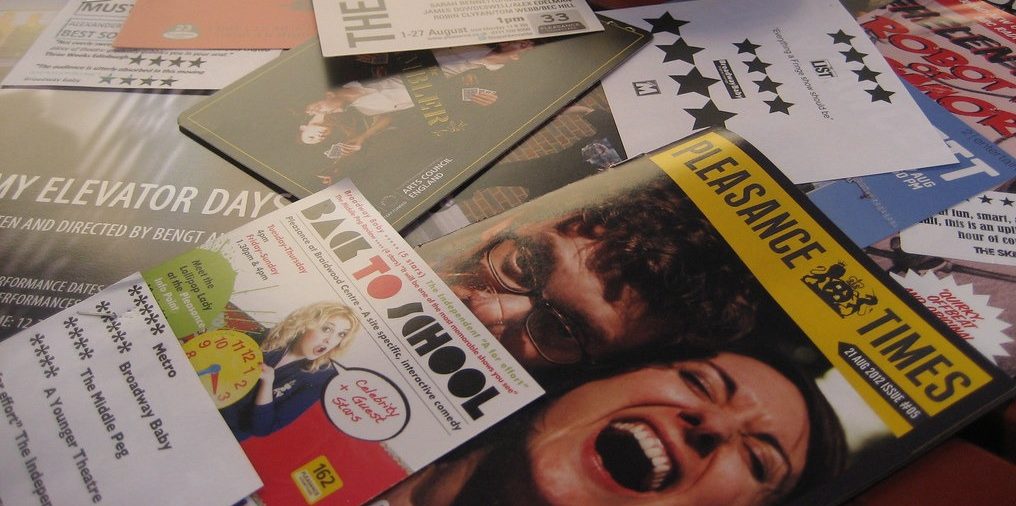Has the Edinburgh Fringe Festival become too commercialised?
Last year, I was lucky enough to take to the stage and perform stand-up comedy at the Edinburgh Fringe Festival, one of the world’s biggest arts festivals.
Arriving in Edinburgh, what immediately struck me were the sheer number of people wading through the relatively narrow Scottish streets. During August alone the city’s population more than doubles, with more than 3,500 shows attempting to reel in passers-by and convince them that their show is the one to watch.
As you walk down The Royal Mile, hundreds of people are flyering, walking by or watching the street performers. Within five minutes, your hands are filled with flyers for countless shows. Improv, stand-up, dance, theatre, student acts – just one walk and you’d come across dozens of different shows. It felt like a place that was championing new, fresh creativity and self-expression. Exactly what the Edinburgh Fringe was made for.
But, bearing down over the city from above was a message far different.
The festival was founded upon the idea that any unknown artist could perform, experiment and entertain on a platform designed to search for new talent
The almost omniscient posters that were stuck all over the city, the ones that covered buildings and lamp-posts, were of the faces of the same ten or so acts. I could recognise every single one of them: all big name comedians or shows that were charging minimum of £20 for entry, glaring down – seemingly laughing at the smaller performers flyering themselves.
This year, more than 3 million tickets were issued at the Edinburgh Fringe Festival, with more individuals than ever attending the arts festival. With its continual increase in popularity comes its continual potential for people to use that popularity to make money.
The festival was founded upon the idea that any unknown artist could perform, experiment and entertain on a platform designed to search for new talent.
What’s worrying is the current outcry from current amateur arts performers looking to go to the festival. It is undeniable that Fringe has become an unbelievably expensive venture.
When performers are left on the fringe of the Fringe, and replaced by big-name, high-budget shows, this space is rapidly shrinking. When commercialism overrides this creativity, the arts suffer as a consequence.
The struggle for space due to commercial expansion has led to excessively expensive rent – up to 5% more than last year – and a monumental increase to acquire performance liscenses at the Fringe. One comedian spoke publicly of his £35,ooo debt acquired during the Fringe.
The result is that new artists are left in a staggering amount of debt in order to perform their show, or are even not able to afford going altogether. Fringe currently remains one of the most important places for performers to take creative risks without the luxury of having a big-budget.
Yet, when performers are left on the fringe of the Fringe, and replaced by big-name, high-budget shows, this space is rapidly shrinking. When commercialism overrides creativity, the arts suffer as a consequence.
Admittedly, my experience of the Fringe was only a positive one. I think it’s easy to complain that the festival is becoming too commercial and fail to see the benefits that its popularity can bring.
For one month of the year, many of the locals have the enjoyment of one of the biggest arts festivals in the world outside their doorstep
There are questions over its sustainability; with more people comes greater need for crowd control. But, at present, there seems to be little issue with the numbers attending. Local business thrives, and a lot of the Fringe takes place within a concentrated central epicentre. For one month of the year, many of the locals have the enjoyment of one of the biggest arts festivals in the world outside their doorstep.
Expectedly, the busier it gets, the more people will be expected to pay, and the culture of donations already in place at the Fringe will continue.
Edinburgh’s size is both its greatest asset, but also its greatest downfall. Everything is accessible via walking, a free student theatre show is just a five minute walk from legend of political satire Paul Merton.
The smaller shows are still getting noticed. People often go to Edinburgh Fringe to see a range of shows. Rarely do people go just for the big commercial names. Normally, there may be one or two acts that a person wants to see, and will fill the rest of their time going to smaller shows. Reviewers are simultaneously following a similar method.
What started as a small festival to champion creative arts that pushed the boundaries of theatre is slowly becoming a commercial enterprise for those who can afford it
These big-name acts naturally draw more people into the festival to start with. If anything, some aspects of the commercialism helps smaller shows as much as hinders them. The more people that attend, the more it drives local business and helps smaller shows get noticed.
In many ways, the festival has become the victim of its own success. What started as a small festival to champion creative arts that pushed the boundaries of theatre is slowly becoming a commercial enterprise for those who can afford it. Whilst there certainly are benefits to its expansion, it needs to be managed in a way that keeps the festival’s creative and inclusive core.
What is clear is that we stand on the edge of the festival’s future. Eventually, there will have to be a level of financial commitment to either side; continue to make it more expensive for commercial expansion, or give in to the demands of those that push for creativity.
But, the question remains. Surely, the festival that champions creativity can think of its own way to sustain both?

Comments